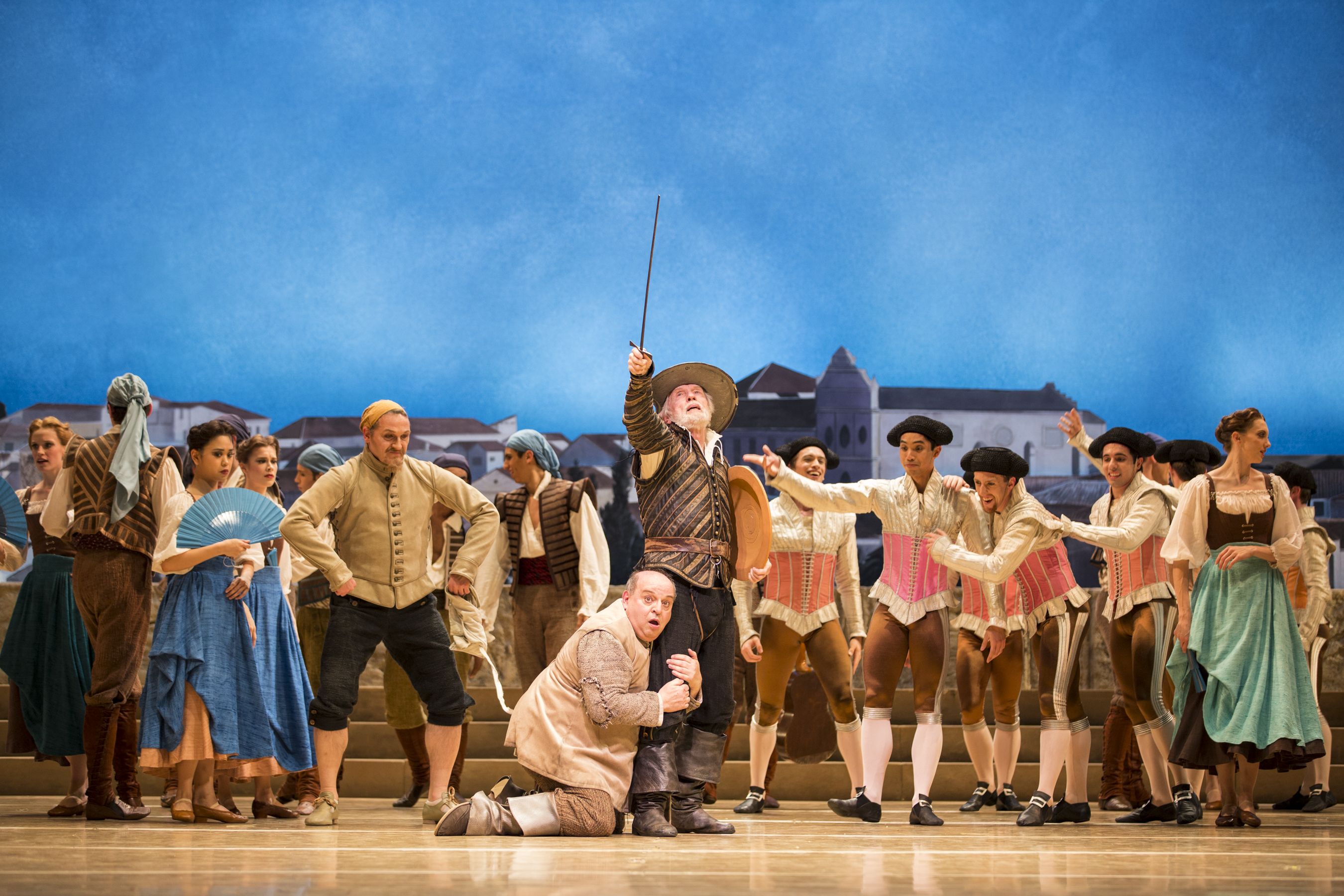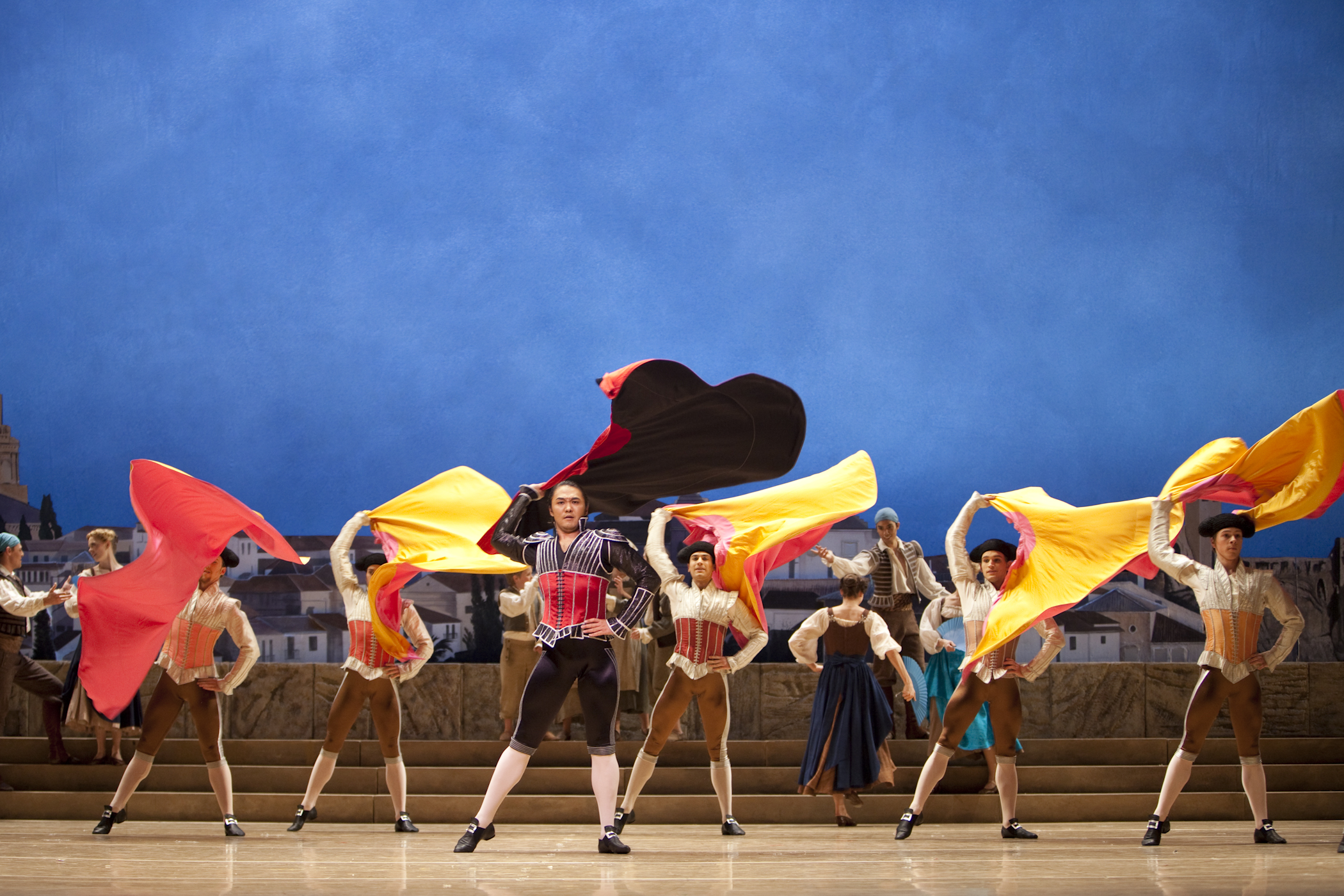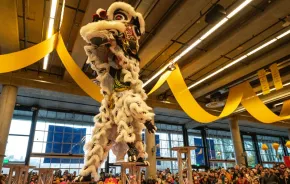
At first glance, the most notable thing about Pacific Northwest Ballet's new production of Don Quixote is that the title role is played by film actor Tom Skerrit, with stage actor Allen Galli as Sancho Panza.
Their roles were not written to be danced. But on second thought, that decision makes sense; neither the aging Don nor his portly sidekick would be very credible leaping across the stage. The story is much better served by allowing them to witness and influence the fate of the young lovers Kitri and Basilio, in a story line drawn from the second half of Cervantes' book.
An actor leading a ballet performance is an intriguing draw, but it is not the real reason that you should see Don Quixote at Pacific Northwest Ballet before it leaves on Feb. 8. There are at least three more important reasons.
1. It's funny
This may be your only chance to see someone hit in the face with a fish in a ballet. Don Quixote is burdened with the label of “great literature,” which often makes people forget that at its heart, it is a comedy. Humor in ballet is often given a light touch, but this production pulls out the comedic stops. As in life, everyone is made ridiculous at some point in the story, and some characters are always so. My children laughed at loud at Sancho Panza's pratfalls and when the foppish Gamache spilled out of his sedan chair onto the ground.

2. It's technically amazing
I was amused by the flirtations of minor characters and the antics of children taking place in the background, but I laughed in sheer delight at the dancers' skill. Don Quixote was created by the great Russian choreographer Marius Petipa, which means the ballet is filled intricate pointe work, dramatic lifts and endless pirouettes.
3. The choreography is beautiful
Don Quixote does not mark the first time I've seen a ballerina throw herself backwards into her partner's arms to be caught with her face inches from the floor, but I've never seen it executed more beautifully. While many Petipa ballets can feel stiff to modern audiences, this revised Don Quixote feels carefree. Amid the twirling skirts and swirling capes, it is easy to forget how technical those movements actually are.

Note that this is not the same Don Quixote presented in the classic film starring Peter O'Toole and Sophia Loren. If that is your frame of reference for the story (Isn't it for most people?) you might be surprised by the ballet version. Windmills are referenced, but never tilted; Dulcinea remains a figment of the Don's imagination; and after helping to unite the young lovers, the Don and Sancho march into the sunset seeking further adventures. It's a much nicer ending.
Parents should know
Traditional story ballets often have pacing issues, but Don Quixote keeps the action moving with a fairly large set of named characters. Not only does the story move forward quickly, but there are subplots scattered across the stage in every scene.
So that kids can follow these subplots, I recommend that parents explain the story in advance, and recap the events of each act with their kids during intermission (see PNB's notes about the storyline). Both my 6-year-old and my 10-year-old had questions about the plot afterwards. (I think they might have been distracted from the main plot by watching the children on stage so closely. Children are active in almost every scene.)
One point of confusion for my kids was the couple Mercedes and the Torero, who have their own pas de deux early in the ballet. It might help to let your kids know ahead of time that Kitri and Basilio are main characters, but they are not the only people in love in Barcelona during the story. There are flirtations and romances among many of the characters.
Finally, though I thought it was obvious, but one of my daughters also needed me to explain that Act Two Scene Two takes place in a dream.
If you go ...
When: PNB's Don Quixote will be performed Thursday, Feb. 5 and Friday, Feb. 6 at 7:30 p.m.; Saturday, Feb. 7 at 1 p.m. and 7:30 p.m.; and Sunday, Feb. 8 at 1 p.m. and 7 p.m.
Length: The entire program lasts about 2 hours and 45 minutes, including two 20-minute intermissions. Arrive early to allow time for parking, pre-ordering snacks and collecting booster seats.
Where: Marion Oliver McCaw Hall, 321 Mercer Street, on the north edge of Seattle Center.
Tickets: Tickets start at $37 and go up to nearly $200. Every family member must have a ticket. Teens may be eligible for youth discounts and/or Teen Tix pricing. Contact the box office for details (206-441-2424). Tickets can be purchased online.
Parking: The Mercer Garage is connected to McCaw Hall by a sky bridge. Rates vary (up to $20) depending on events at Seattle Center. Other pay lots in the neighborhood have similar pricing. Street parking is limited to 4 hours, and hard to come by. Consider taking the bus – look online to plan your route.
More tips: Booster seats can be borrowed at no cost, and binoculars can be rented for $5. Snacks are expensive at McCaw Hall, but the cost supports the arts. You can bring snacks, but no food is allowed in the auditorium.











